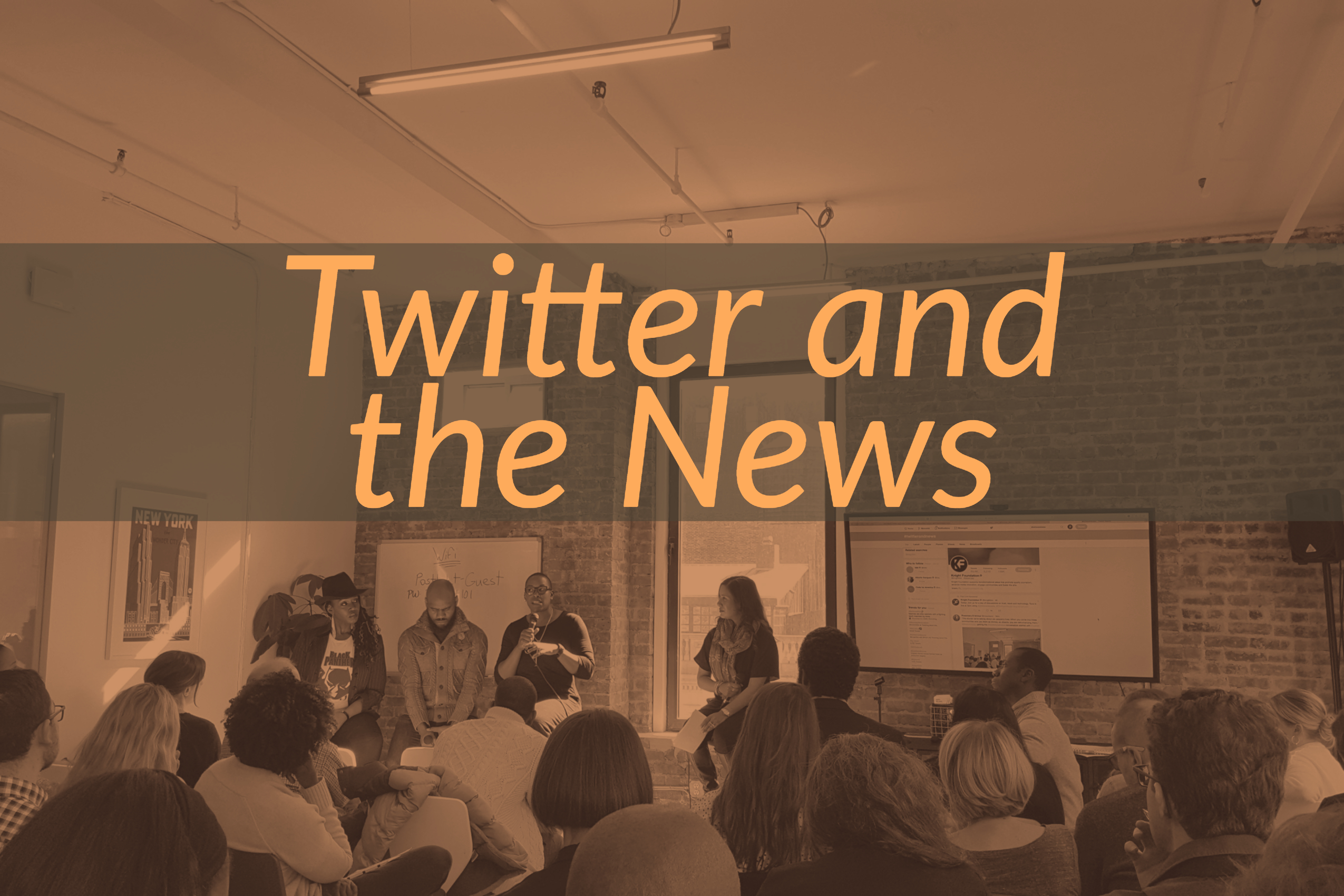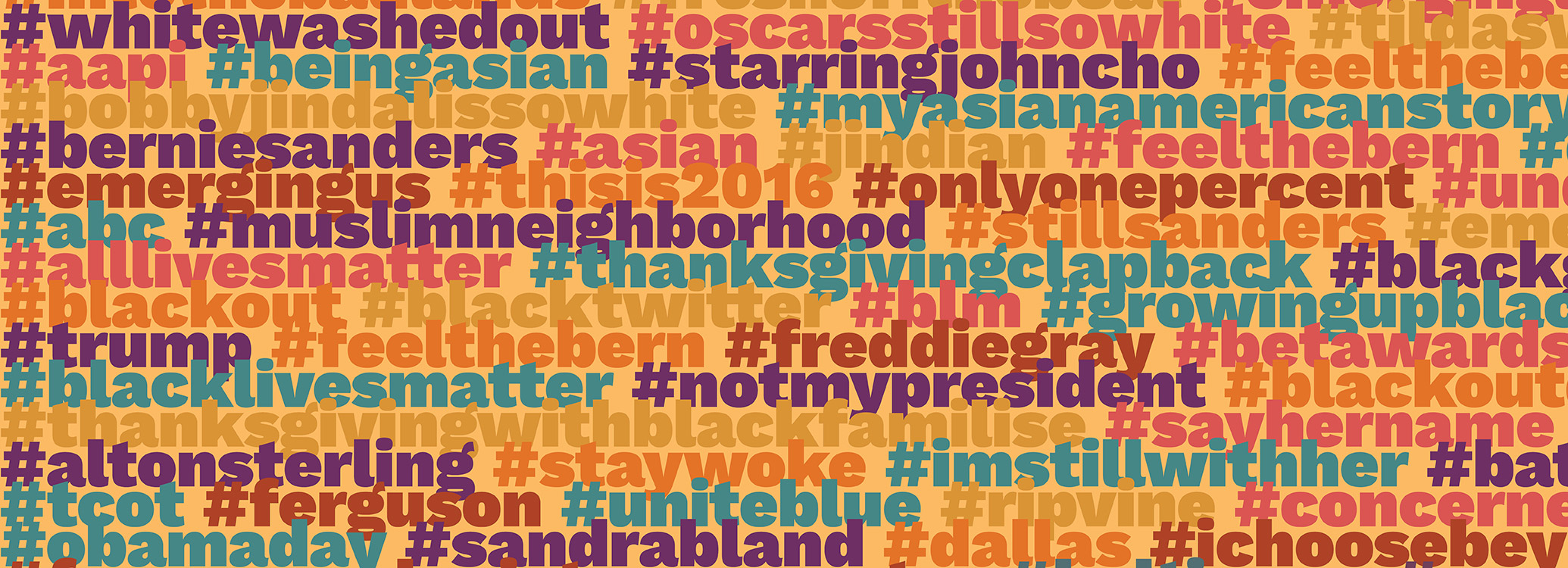
Why diverse online communities don’t trust journalists and seven ways to fix it
While Twitter and other social platforms have allowed media outlets to connect with wider audiences, they’ve also created an environment in which some communities feel exploited by journalists.
A recent event highlighted why some communities—in this case, Black Twitter, Feminist Twitter and Asian-American Twitter—mistrust the media, and what might be done to change that dynamic. The event, hosted by Knight Foundation in collaboration with New-York based design studio Postlight, built on a recent report that examines how these communities interact with reporters. Panel discussions between the report researchers and journalists and technologists tackled issues from improving the relationship between journalists and these communities to the role of platforms in feeding mistrust.
Sydette Harry, editor at Mozilla and editor-at-large of The Coral Project, kicked off the panel discussions, by leading audience members in a chant. “The first thing I want everybody to say is – people!” she said.
“The stories you are talking about are people’s lives,” she continued. “When we talk about stories mainstream media doesn’t cover, we’re talking about, ‘Can our people have water to drink?’ ‘My cousin got shot.’ ‘My cousin got deported,’” said Harry. “So, when you come into these communities and you use them as stories, as objects, you are literally dehumanizing them and this has been the history of journalism.”
But blame also lies with how Twitter and other platforms are structured, panelists said; they create systems that allow for a power imbalance where the most vulnerable populations are often quoted out of context and left open to online harassment after their tweets are published by media.
Anil Dash, entrepreneur, activist and writer, emphasized the need for big technology platforms to be accountable to their users because of the incredible impact they have in shaping our views and interactions. In addition to being influential, Twitter in particular, he pointed out, makes user updates and comments highly visible to a large public audience.
“There is this thing about a role in culture that they’ve always over indexed on. And that has a higher responsibility,” he said.
In addition to Harry and Dash, panelists included: Elizabeth Nolan Brown, associate editor at Reason; Meredith D. Clark, assistant professor at the University of Virginia; Paul Cheung, director of visual, NBC News; Deen Freelon, associate professor at the University of North Carolina; Olivier Kamanda, Knight Foundation director for learning and impact; Terrell J. Starr, senior writer at The Root; and Manoush Zomorodi, host and editor of Note to Self.
To rebuild trust, panelists suggested the following to journalists:
1. Spend time in the community:
In part due to newsroom budgets, reporters often source stories from online communities without establishing a beat and going back repeatedly, thereby building trust. Clark stressed that “parachuting” into these communities “when you need something” is not the right approach. Participants then don’t see individual journalists with a vested interest in their issues, but large media companies sent to extract information. Freelon said that beyond building trust, spending time is about getting things right. “Take the time to find out about what it is that you’re writing about, if for no other reason than to not fall flat on your face when you write the story,” he said. Nolan further emphasized the importance of having a presence in these communities beyond the big stories and encouraged journalists to share content that matters to these communities, beyond the articles they write.
2. Recognize your blind spots:
Even those who might have some credibility because they are members of these communities need to be aware of their own blind spots. “As a minority, my race does not make me correct,” said Starr, who added that as a black reporter reporting on police harassment of black trans people, he had to learn how to not misgender people, and relied on black trans people to educate him.
3. Don’t hide behind the data:
The Knight report revealed that popularity in terms of “likes” and share counts does not necessarily mean approval or trust, and could signal a negative reaction to coverage. Aligned with this finding, Cheung challenged news organizations to step away from the term “audience engagement,” which, he said, is grounded in what the numbers say rather than meaningful connection. He reminded journalists that data only tells one part of the story. “For the 2.0 version let’s not call it ‘audience engagement,’” he said. “Audience engagement gives permission to the media agency to hide behind data and not actively engage the community. The next generation of jobs for audience engagement should have a community affairs and public component.”
4. Acknowledge that educating people is hard work:
Clark said that while it’s good that people have social media and other avenues to speak up when their communities are poorly or inaccurately covered, reporters need to be aware of the “responsibility and labor” that is then placed on those people to educate them. “It’s like, ‘Okay, we did not serve you and now we need you to serve us in order to serve you better,’” she said.
5. Understand context, not just content:
Often, the issue isn’t that journalists get the facts wrong, but that they don’t interview people who can provide context, and produce stories that demonstrate a level of ignorance about these communities. Cheung referenced a Twitter storm that arose after the New York Times published a story on bubble tea, as if it were an “exotic” new drink that had only recently been discovered. “The facts were true – it is delicious, it is from Asia – but the context was all wrong,” said Cheung. “If you can’t even get covering the community right, why would they trust you on anything else that you would be covering?”
6. Platforms can regulate how tweets are used:
Media outlets often feel free to use people’s tweets in their stories without asking permission because the tweets have already been shared with the general public. But some people don’t want to be quoted, and they might be harassed by users who disagree with their published tweets. Kamanda pointed out that just as Twitter has created rules for character limits and who users can DM, it could build in a requirement that for a tweet to be embedded, it would require the author’s approval. Dash further reminded reporters that, absent a platform safeguard, “there is no downside to consent.” Asking users permission to repurpose their tweets helps with relationship-building.
7. User needs should be built into platform business models:
From online harassment to usage rights for tweets, community members surveyed in the Knight report expressed discouraging problems with maintaining a public presence on Twitter. Dash stressed the need for platforms to prioritize creating tools to address these problems and questioned the pace at which solutions are developed. “They’re not bad people, but they don’t feel the pain. And it effects who gets listened to and when,” he said. Zomorodi emphasized the need to change who is at the table. “It’s the people making it, it’s the people using it, and not just using it as journalists, but regular people too,” she said. Aligned with bringing more voices to the table, Kamanda added, that while newsroom diversity is important, the same diversity is required at every stage of platform building including user experience, development, leadership and everything in between.
R
-
Journalism / Article
-
Journalism / Article
-
Recent Content
-
Journalismarticle ·
-
Journalismarticle ·
-
Journalismarticle ·




